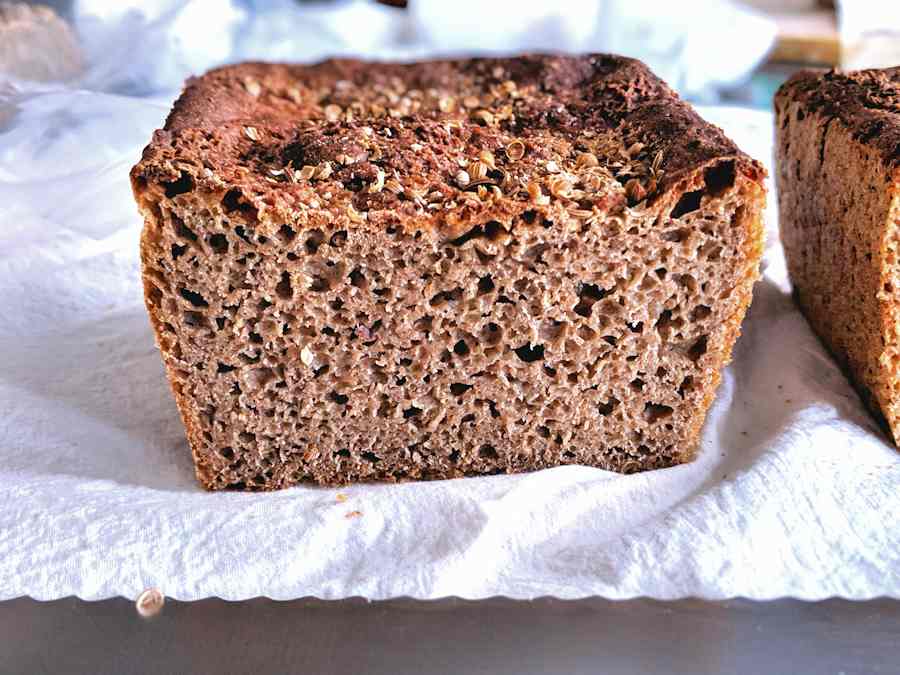Borodinsky bread: dark, solemn and intensely sour, the famous Russian rye sourdough, not to be confused with Russian black bread. I wonder why there are no Russian fluffy white buns?

Borodinsky bread is not for the faint hearted, and I mean both baking and eating it. The loaf is rather hard-core if you’re used to your plain sliced white. It’s dense, intensely sour, strong on coriander and dark in colour.
Rye sourdough the best for gut health
You can tell just by looking it’s good for your gut. Firstly, it is sourdough and everything fermented is like plant food for the bacteria living down there. But it’s rye sourdough as well and that is like plant food plus an energising massage for the insides. What’s not to like?
But I do admit it’s an acquired taste, and the amount of the crushed coriander seeds might give some people itchy teeth just by looking. But overcome the bias, and you might really enjoy it: thinly sliced, buttered and topped with a sliver of pickled herring or, going in the opposite direction, thickly spread with honey. It’s not a great toaster, although The Weather Man who toasts everything finds no fault with toasted Boro, so it’s up to individual taste.
What is the history of Borodinsky bread?
The legend has it that this solemn dark rye sourdough was first baked before the battle of Borodino, to give courage to the Russian troops for the fighting ahead. Another version holds that it commemorated a Russian general fallen in the battle, baked (bread, not the general) by the grieving widow.
Good tales, either way. If the bread baking traditions were as strong in Britain, we should now have Waterloos, Blenheims, D-Days or at least Charges of the Light Brigade in supermarkets instead of Hovis or Tesco Everyday Value.
How to make rye sourdough from scratch?
It’s a long process; you have to start the rye sourdough starter on a Monday at least in order to enjoy a weekend loaf. Over five days you feed your sour with dark rye flour and water, keep it warm and it rewards you by bubbling vigorously.
The next stage is the levain, or production sourdough, or first dough. You cannot just add sour starter to lots of flour like it was yeast – it has to develop its appetite gradually, little by little, and it takes another day to mature.
The main dough takes you seriously back, all the way to your childhood and the times of mud cakes because that’s precisely what the dough resembles. It’s a grey-brown lump of sludge and there’s no question of kneading it – the process is closer to mixing concrete. But that’s perfectly fine because that’s how rye dough works, no lovely gluten structure – which actually makes it more digestible for the gluten intolerant.
The we dump it into a buttered tin – hard fats work better here than oil which might just amalgamate with the proving dough – with more coriander on top and wait. It takes forever to rise and it doesn’t do much oven spring. But it works if the recipe is followed closely and the end product is very rewarding. No wonder Napoleon had to eventually beat a retreat…
The recipe comes from the excellent Bread Matters by Andrew Whitley.